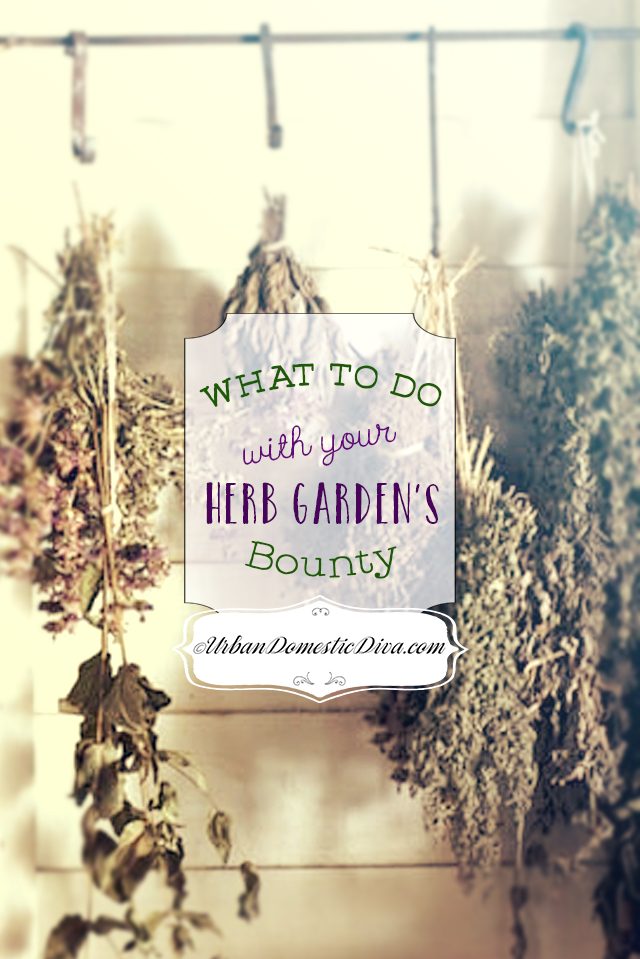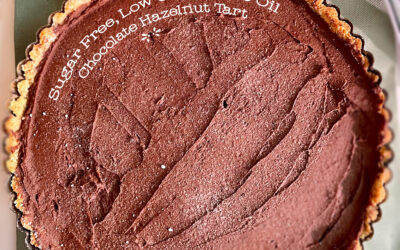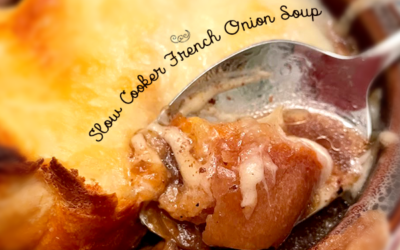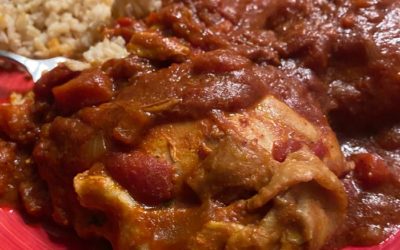Many people grow herbs during the summer. But oftentimes you have so many plants you don’t know what to do with them all. The other sad thing is when the seasons change, and it becomes fall, most people just give up and let herbs alone to freeze and die. Don’t let all that hard work and quality flavor go to waste! Here are some things my husband and I do with our herbs. They are not time-consuming at all, and well worth it.

DRYING:
Clip back your herbs, and rinse gently your harvest. Lay them flat on some paper towels to drip dry for a couple of hours. Then collect your herbs in a bunch and tie with twine. Hang them upside down using your twine in a cool, dry place undisturbed. Some people put a paper bag over their bunches with some holes punched though for air to circulate. They do this to keep the herbs dust and dirt free. I am not that neurotic, nor do I keep them drying out for very long. Once they are dried and brittle, I flake off and crumble them on a clean piece of paper. Then I bend the paper so that the herbs easily slide into a clean, dry jar. I label the jar and store the herbs all year. Herbs dried this way are more flavorful than the mass-produced stuff you get at the grocery store. Who knows how old that bottle of parsley is sitting on the store shelf, being exposed to lovely ultraviolet light making it as tasteless as a potato? You get the picture.
FROZEN:
This is the next best thing to fresh herbs–a great way to taste your summer bounty in the middle of February. It’s best to get a lot of ice cube trays for this exercise. I chop up my harvest as if we were going to use it that day, measure the herbs in Tablespoons, and put each tablespoon in each ice cube square. I add water to each square and freeze the tray. After a couple of days, I pop them out and put each herb grouping in its own freezer bag labeled. Now you have easy Tablespoon increments of chopped herbs for your recipes. I typically just throw the whole cube in frozen when cooking. But if you need less, I would recommend defrosting the cube and taking what you need.

Oils & Vinegars:
Secretly, this is my favorite part of growing herbs. There is something really beautiful and rustic for me to look at herbs I grew in a beautiful olive oil bottle seeping its yumminess into the oil. Doing infused olive oils is a little more labor-intensive and can be unsafe. What I mean is that if you use fresh vegetables or fruit in the oil, it can only sit out for two weeks. After that, things get “fuzzy” in there. So you have to run the oil thru a sieve and discard the organic material. Then the oil is fine. Vinegar is a better preservative and can keep fresh vegetables a little longer. Infusing oils and bottles of vinegar is not only a great habit for your own herb garden, but for store-bought herbs. How many times have I thrown away a box of thyme because I only needed a Tablespoon and the whole box gives me a quarter cups worth? Some of those herbs get pretty pricey.
So, step one is you sterilize your bottle by putting it in boiling water for 5 minutes, then I dry it out. If it is a long bottle, I use a bamboo skewer and a paper towel to get in there and make sure there is no water in the bottle. I rinse my herbs and peel any vegetables. I let my herbs drip dry on a paper towel for a couple of hours. (I find the less moisture on the herbs, the safer you are). I pop all my goodies in the bottle, pour in the olive oil, and let it sit for two weeks. Then, I drain the oil through a fine sieve (cheesecloth works well too) into a clean, dry bowl. I discard the organic material. Then sterilize the bottle again in hot water, and dry it really well. Pour your infused olive oil back in the bottle, label it, and voila! You have a little extra something special you can throw into anything while cooking!
Here are some combos I like, but I am sure you can come up with your own!
Italian Flavor- A couple of cloves of garlic, 4-5 peppercorns, and any mix of; sprigs of rosemary, thyme, oregano, and basil (sage and basil is another nice combo)
French Flavor- A healthy mix of fennel, tarragon, thyme, rosemary, coriander, peppercorns, and bay leaves (sometimes a little lavender can add a little depth)
Hot Spice- chopped up dried red chilis (5-6), 10 peppercorns, 2 Tblsp cayenne (feel free to mix and match other dried chilis)
Lemon Citrus- sprigs of lemon balm, a few lemon rinds with the pith removed, a clove of garlic or two, and some peppercorns.
- Sugar-Free, Low-Carb, Olive Oil Chocolate Hazelnut Tart - February 18, 2023
- Easy Slow Cooker French Onion Soup - November 28, 2022
- Recipe: Chicken Vindaloo with Whole Foods Vindaloo Curry Powder - January 22, 2022





